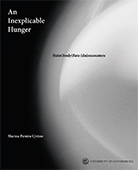"This doctoral research is structured by singular encounters, that happened between 2014 and 2018. Together with a series of collaborators, I have developed a critical and poetic methodology through what I call “mixture”, “contamination” and the practice of “un-goaling”, in which my “flutist-body-flute” relation encounters the practices of other artists. A search for flexible modes of being a flutist, as a way of working around a dominant characteristic of Western musical practices: what I call a fragmented specialisation, or a specialised fragmentation. A flute-body traverses a body-flutist, a pulsating: metamorphosis. A practice of metamorphosis traversed my body-musician. It sowed a fragility, awoke a taste for a creating-in-mixture that also traversed the transverse flute that keeps up with me. It stirred a mixture-experimentation flavour that was already inside, but constrained. It aroused an inexplicable hunger. It taught me how to sustain the time of an estrangement. From the practice of metamorphosis, I imagined a mixture, a “mix-arts” as a method of artistic investigation. I would mix art modalities. I would mix roles: interpretation, improvisation, composition. I would mix “mine” with “yours” through co-creations. I would mix my body with a body-flute until it becomes a “flutist-body-flute” relation. Mixture as method grew out of my growing concern at being an expert at being an excerpt of myself. Without being able to combine the practices that coexisted inside me, almost isolated, I searched for a way to tune out a certain being-flutist, an image-inside that has guided my practices so far. But the mixing did not happen in a random manner: it was guided by encounters. Encounters emerged as method and structure; as a method for finding ways of de-anaesthetise the forces of creating, for finding ways in which artistic creation is guided by a vulnerability to the other as a living presence. The practices of co-creation/composition and performance have been translated into sound/video and written essays, in a process of “deciphering” and “remembering”. Through this method, I claim that each encounter sets the practices that will guide the mixture. These practices are as many as possible encounters, and made sensible to the reader through the present dissertation."
Marina Pereira Cyrino


